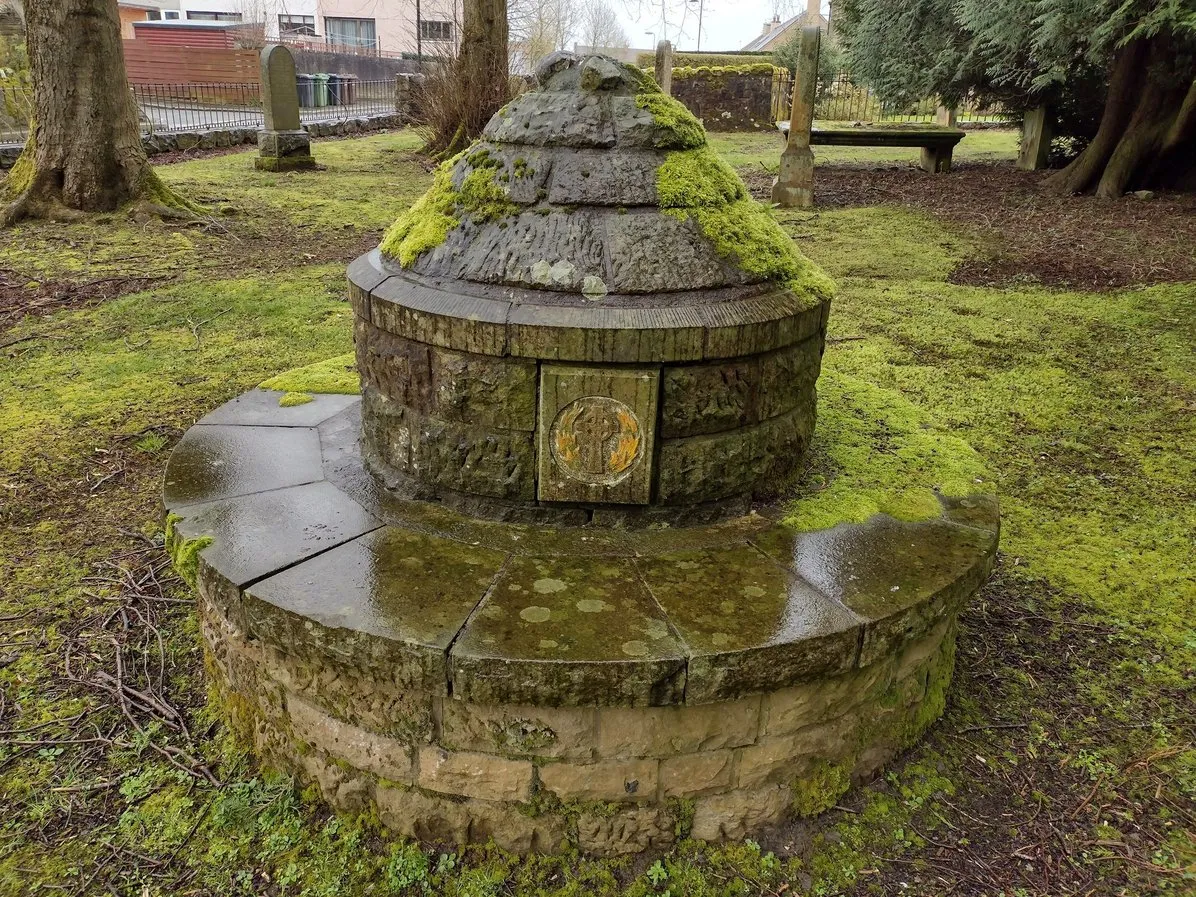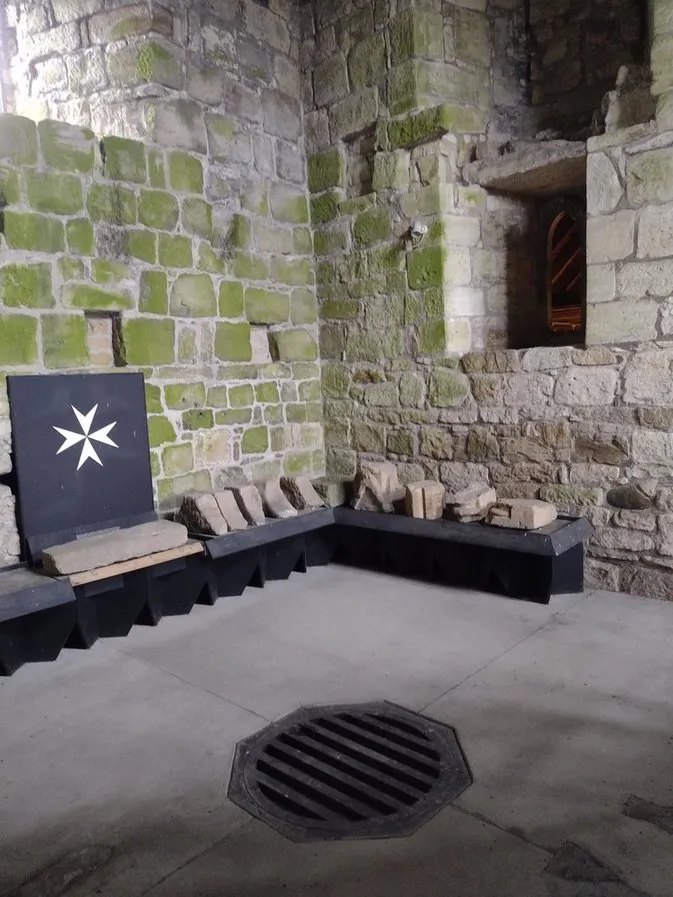A few weekends ago we visited Torphichen Preceptory which is a really fascinating place that I'd never really heard of before.

The preceptory was basically a base in Scotland for the Knights Hospitaller, a religious military order. The base was used for fund raising and recruiting for the crusades. The order itself was founded in Jerusalem in the 12th century. Disclaimer - I'd like to point out here that I'm just making a post about in interesting building we visited and certainly am not in favour of crusades or war of any kind, and have absolutely no interest or alignment to any politics the order may have held at the time.

I find the main centre of the complex quite intriguing, because it clearly looks like a church but sort of fortified - I dont recall ever seeing anything like it. It mainly dates from the 12 century, but there likely was buildings here earlier than that. The functioning church (Kirk) that still exists was built in the newer buildings added in the 1750s.

The complex of buildings would have been huge at its peak, and you can still see the foundations of the outlines of other parts of the complex.

This view at the back shows where a considerable wing used to be attached to the main tower, which by all accounts extended out fairly far into the adjacent famers field.

This is located in Torphichen (pronounced tor-ficken), which is a fairly small village in Central Scotland (which we'd never been to before). The location is fairly odd because Torphichen is located up in the hills and aint that easy to get to, so it sort of seems an odd location for a base in Scotland, apart from that it is located in the central belt.

You can go inside, although it is entirely bare now, and just has information boards. However you can see how old it is - just look at those stone vaulted ceilings.

You can then also climb the stairs to the bell tower (above) which is pretty interesting, although again, completely bare. I do love that arched surround for the window in the pic above.

You can also go into this side room in the bell tower - I do love all of the window surrounds you can see - very quaint ! These rooms contain quite a lot of information on the order and its history, which is fairly interesting to read.

Today the site is split in two, because you can also visit the churchyard for the kirk attached to the preceptory that is still functioning today (although we couldnt go inside the kirk when we visited).

The church yard was really interesting and had some intricately carved gravestones unlike others I've seen. A number of these stones dated back into the 1700s.

The stone above, for Isabel Brown, was hidden under a bush at the back of the graveyard.

The skulls on either side are not something I've seen before.

And thats another interesting one above , clearly relying heavily on symbiology.

Some of them also had quite interesting side carvings.

To be honest, I'd seen this place listed in the Historic Scotland website and had never really given any consideration to visiting it because it didnt really look that interesting - but we were quite shocked by it. You just wouldnt expect it to be where it is and have all that history.

It certainly seemed like one of the prettier village graveyards we have seen in these parts, and the history was quite interesting - especially the beautifully carved stones.

The site exceeded my expectations, and I even enjoyed the journey to get there along roads and up hills in central Scotland that we have never been on before - it sort of seemed like we were miles away from anything , say up in the Highlands somewhere, although that really wasnt the case - this place is basically in the middle between Edinburgh and Glasgow.

We enjoyed the visit and I certainly would go back to see it again - the architecture alone was worth it for me.
